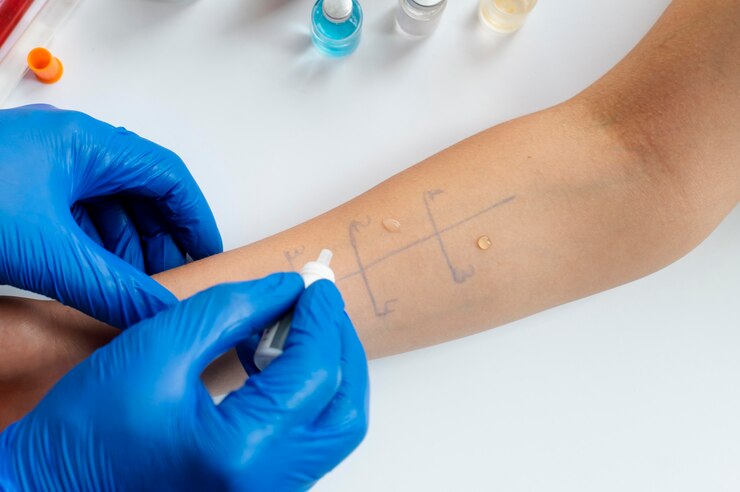
Skin allergy testing is a procedure used by healthcare providers to identify substances that may trigger allergic reactions in a person. The test is typically performed by an allergist and involves exposing the skin to small amounts of allergens to observe any reactions. There are two common types of skin allergy tests:
Skin Prick Test (SPT):
- This is the most common type of skin allergy test.
- Small drops of allergens are placed on the skin (usually on the forearm or back).
- A tiny needle or lancet is used to prick the skin, allowing the allergen to enter the outer layer of skin.
- If you are allergic to a substance, a small raised bump (similar to a mosquito bite) will appear at the site within 15-20 minutes.
